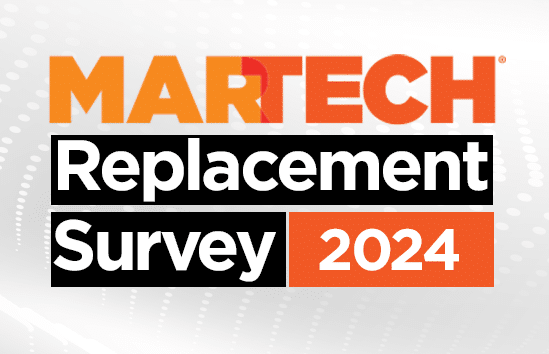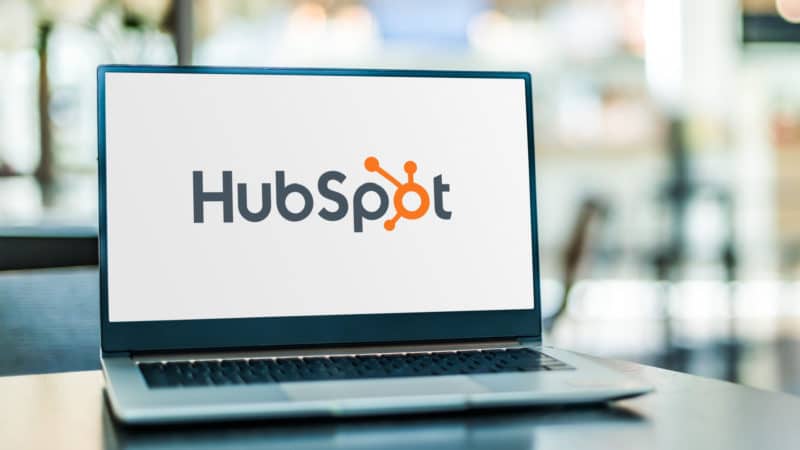We know martech and demand generation strategies work best to engage prospects when brand recognition is present. So, why don’t we consistently use those strategies on existing customers with a higher brand understanding?
Many marketing teams neglect the opportunity to engage and upsell customers using proven, data-driven prospecting techniques.
Customer marketing and prospecting are not the same. However, some approaches used in prospecting can help increase customer revenue and retention. Some content created for prospecting can also be relevant and helpful for customers.
Leveraging martech for customer engagement
One way to engage and upsell customers is through value-added tools and content. Your sales and account management teams may already be using some of your prospecting content in relationship building. It’s time to pay attention, customize your tools for specific customer needs and learn from the data to improve your performance rate for all audiences.
First, utilize the same martech tools used to identify prospects to upsell, cross-sell and retention opportunities.
- Recognize customers on your website through your CDP or automation software and send them to a customer-first version of your home page or other landing page with a custom chatbot opening question. Watch for patterns in page path analysis. Are there certain products or services they need? Are they looking for customer service or content?
- Build upsell and cross-sell journey maps for key customer segments using scoring techniques and tools used for qualifying leads. Many buyers, especially B2B, do research online before speaking, even with a trusted account manager. Your website should have customer engagement content on your product pages and blog, and email messaging can be used to nurture engagement and interest. Short-term (3-8 messages) email series are very powerful for customers, as they can nurture follow-up after a customer service interaction or a content download event.
- Account-based marketing is often used to cross-sell within an organization, broadening the user base. It relies on relevant, engaging content that appeals to colleagues beyond the primary buyer. Develop content or tools for the relevant stakeholders in other functional areas like technology, commercial, digital and brand teams.
Then, re-purpose or develop compelling offers specific to customer needs. Three types of assets are commonly used in customer engagement: services, tools and content.
Customer marketing: 7 assets to grow lifetime value
Here are seven value-added tools and content strategies that can be used to grow new revenue from existing customers. Partner with your data and marketing ops, account management and customer service teams to identify the right place in the customer lifecycle to promote each.
Services
1. Free assessments or audits
These repeatable audits are commonplace, so make sure yours offer real value to customers. Ideally, they also collect meaningful data and are connected to your CRM and/or marketing automation solution for scoring and journey-based nurturing.
Benchmarks are always compelling, especially if you have data analysis by vertical or industry. Marketers and product owners love these because they allow us to listen to customers’ challenges and identify pain points, leading to upselling solutions through personalized recommendations.
2. ‘Office hours’ with experts
Office hours are becoming more common, as they have a more human approach than webinars and chatbots. The idea is to host regular online Q&A sessions where customers can connect with your product experts in a small group setting, allowing more personalized interaction over specific challenges. Just open the “phone” line in a virtual meeting and answer questions.
Use a demo of a new product feature or a summary of an industry report to kick off the conversation. It’s a great way to showcase the expertise in higher-tier plans with dedicated support channels.
Microsoft offers open discussions weekly for customer IT admins and product managers. Fellow MarTech.org contributor Sabina Pons wrote about the growing trend of B2B communities, where office hours might be offered as one benefit of joining.
Content
3. Interactive content and quizzes
We are still in the golden age of gamification, where loyalty and usage are built through interactive content, badges, prizes, leaderboards and the chance to become an insider or expert.
All the better when an interactive quiz or assessment helps you evaluate a customer’s current situation and recommend personalized product upgrades or additional services to address their specific needs.
Marketo’s Marketing Maturity Assessment delivers a personalized report on your use of marketing technology benchmarked to your industry. It’s a great way to educate and encourage an upsell to a premium plan that will bridge any gaps.
4. Templates and collaboration tools
Most SaaS companies offer some sort of strategy template or developer matrix as a late-stage purchase decision tool. Tailoring them for customer use strengthens the core brand and boosts customer awareness of what is possible.
A company offering educational software might provide free downloadable curriculum development templates and limited access to collaboration tools for educators to share and edit lesson plans.
Collaboration tools help emphasize the benefits of seamless collaboration available in paid plans, addressing a need potentially identified through their free tools. Salesforce Trailhead offers several ways for customers and prospects to learn via programmed courses or their global community.
Tools
5. Interactive ROI calculators
Online tools that calculate the potential return on investment (ROI) a customer can expect from your product or service can personalize the value proposition and demonstrate confidence in the solution’s effectiveness, encouraging investment in higher tiers or additional features.
I recently promoted a supplier assessment at WEX that identified the immediate revenue return opportunity in digitizing supplier payment management for procurement officers. Microsoft offers an ROI calculator for its Azure cloud computing platform that estimates the cost savings and productivity gains achieved using Azure.
Calculators are great tools for proving value to customers and evaluation-stage prospects.
6. Free skill gap assessments
A professional development company like LinkedIn Learning offers brief previews of courses along with a free skill gap assessment to upsell customers from free or lower-tier plans to more premium offerings. Tying in a personalized learning plan would make this more powerful and help automate web and email content presentation with a set of recommended courses.
To cross-sell, a fintech company could offer a free financial health checkup tool to generate a report identifying potential areas for improvement and cost-saving opportunities. Similarly, any SaaS company can offer a productivity gain assessment that shows how much time will be saved using automation tools and freeing up human time for strategy.
7. Customized data dashboards
With generative AI handling some data visualization tasks, I predict data dashboard offerings are going to increase. These have to deliver real-time insights into key metrics relevant to business goals.
Reporting is also one of the most neglected and misunderstood areas of SaaS products, so promoting these tools to current customers can be a win-win for both the customer and the brand. The clearer the customer’s success is, the more value they will assign to the product.
GE Predix offers industrial companies data analytics dashboards that track the performance of their equipment, where upgrades to higher tier plans unlock more granular data and advanced analytics.
Leverage these 7 value-added assets to increase customer revenue
In addition to demonstrating expertise and encouraging investment in premium products, all these types of assets also educate customers, provide feedback on real-world challenges and foster stronger relationships by creating opportunities for conversation with customers. How will you use your martech stack and knowledge of prospect behavior to drive new revenue from customer audiences?
Dig deeper: Using data analytics for customer acquisition: Best of the MarTechBot
Email:
See terms.
The post 7 value-added assets to engage and upsell customers appeared first on MarTech.





